The Age of Sail was quickly coming to an end during the Napoleonic Wars. Little had changed during these 200 years. Ships and artillery had remained virtually the same, while battlefield techniques only significantly changed during the era’s final drama. Admiral Horatio Nelson’s tactics of annihilation at the birth of the 19th century made it essential that equally destructive weapons be introduced into combat. Consequently, the Industrial Age welcomed new ordnance and motive power technologies which caused a major revolution in ship design concepts, construction, and composition. While seamen would feel relatively at home in ships of either the 17th or 18th centuries, Admiral Sir Edward Hawke’s Royal George sailors would have been overwhelmed by the new vessels and firepower of the late 19th century.
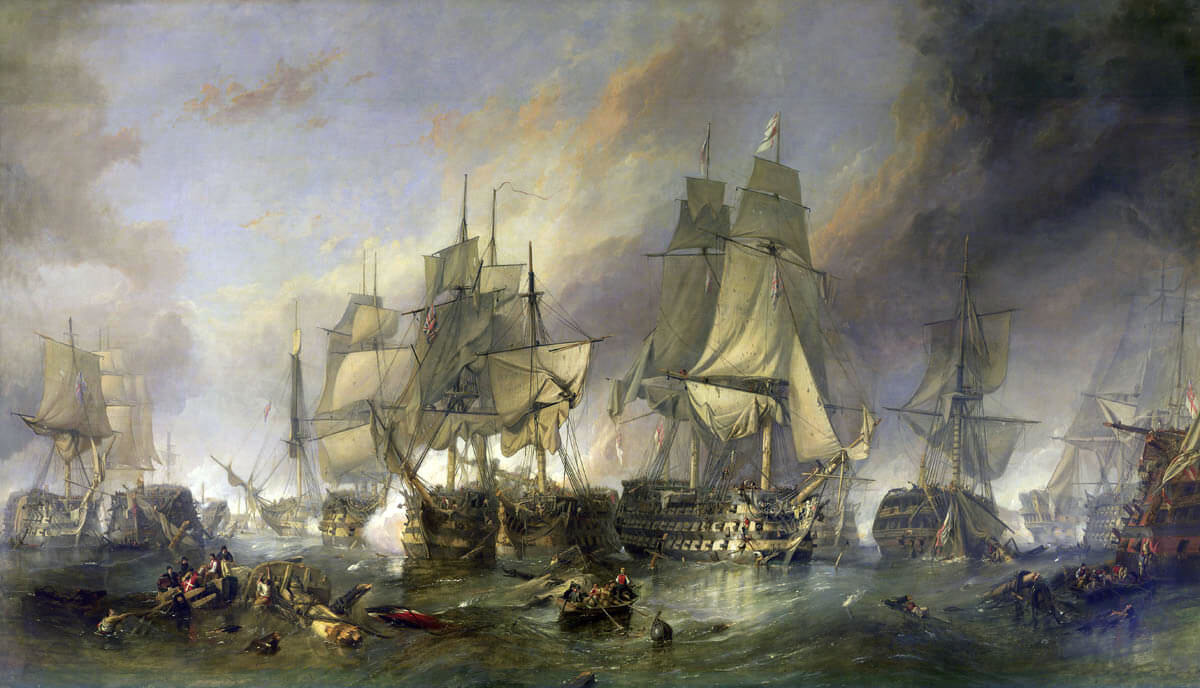
End of an Era
The Napoleonic Wars prompted the development of new types of artillery. Heavier guns with greater impact and projectiles with more destructive power were sought to gain battlefield superiority. Rockets, explosive shells, and columbiads were all introduced; however, naval warfare remained the same. Wooden sailing ships had ruled the waves for centuries, and admirals seemed satisfied with fighting sea battles in the traditional manner. Notwithstanding the new Nelsonian concepts of penetration and envelopment of an enemy’s line, technology limited combat to cannonballs and musket fire. New tactics of annihilation required equally destructive weaponry. Accordingly, old warfare techniques ended when Brigadier General Henri-Joseph Paixhans published two books: Nouvelle Force Maritime et Artillerie1 in 1822, and Experiences Faites Sur Une Arme Nouvelle2 in 1825, in which he advocated a system of naval gunnery based on standardization of caliber and the use of shell guns. European armies used explosive shells for howitzers, mortars, and coastal defense guns as early as the 1760s. Paixhans acknowledged that his concepts were not new; nevertheless, his thoughts unified a series of ideas that proved to be revolutionary.
In 1824, Paixhans tested an 80-pounder shell gun against an old 80-gun ship of the line, Le Pacificate, at Brest, France. Sixteen shells demolished the battleship. Besides demonstrating the tremendous destructive power of explosive shells, Paixhans argued that modern warships should be steam-powered, iron-plated, and armed with like-caliber shell guns.3
From Shot to Shell
Shells were far superior to solid shot for wooden warship combat. Whereas a solid shot strove to penetrate (yet often did not) the wooden sides of warships, shells were detonated upon a ship’s sides, leaving an irregular hole that was difficult to repair and could quickly sink a wooden vessel. And sparks from the explosion could ignite fires on the damaged warship. Furthermore, the resulting wooden splinters and iron shell fragments had nasty anti-personnel properties which could decimate a crew. Initially, the lower velocity required to propel shells against a target meant that the shell guns could be lighter, allowing more powerful guns to be mounted in a warship’s battery, increasing the weight of its broadside.
Other ordnance improvements followed Paixhans’ work. In 1835, Harvard professor Daniel Treadwell introduced cast iron smoothbore guns, strengthened with wrought iron cylinders, yet these guns proved too expensive to produce.4 Other gun designers worked to solve the problems of cast iron’s weakness. Their objective was to increase the projectiles’ weight advantage. The 1844 USS Princeton disaster near the Washington Navy Yard involved an XIII-inch shell gun that exploded on the deck of a new steam screw frigate, killing and wounding numerous American politicians and naval officials. This demonstrated the problem with large wrought-iron guns. The welding of bands and the inherent weakness of wrought iron due to prolonged exposure to intense heat made gun designers look for other solutions.5
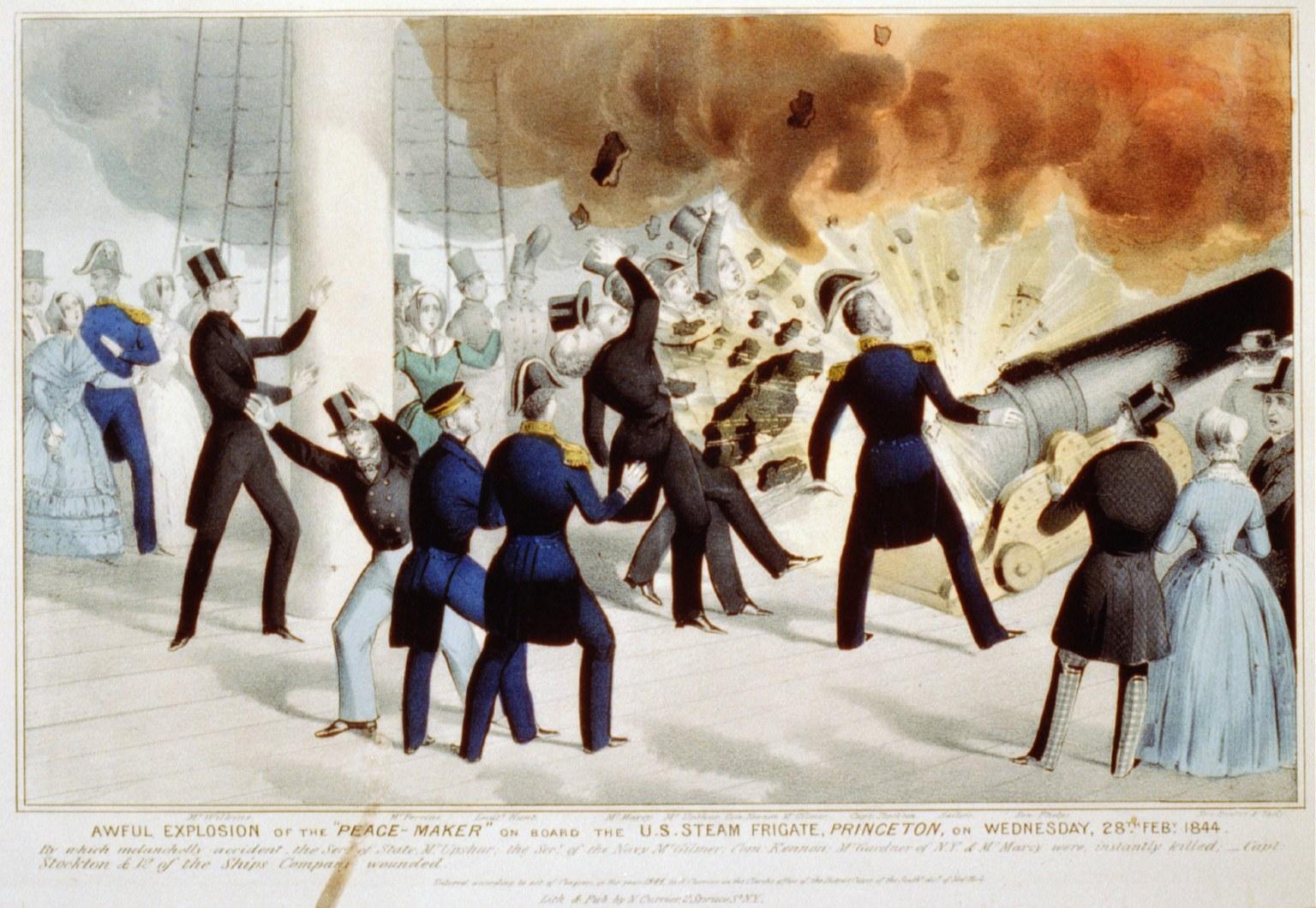
Dahlgren’s ‘Soda Bottle’ Gun
Lieutenant John A. B. Dahlgren believed that “inferiority in overall number of ships might be offset by superior ordnance.” 6 Dahlgren advocated the US Navy’s transfer entirely to shell guns. He later noted:
Paixhans had so far satisfied Naval men of the power of shell guns to obtain their admission on shipboard; but by unduly developing the explosive element, he had sacrificed accuracy and range. … The difference between the system of Paixhans and my own was simply that Paixhans guns were strictly shell guns, and were not designed for shot, nor for great penetration or accuracy at long ranges. They were, therefore auxiliary to, or associates of, the shot guns. This made for a mixed armament, and was objectionable as such … My idea was to have a gun that should generally throw shells far and accurately, with the capacity to fire solid shot as needed. Also, to compose the entire battery of such guns. 7
In 1854, the six Merrimack-class of steam screw frigates were equipped with IX-inch Dahlgren shell guns. By 1856, the Dahlgren gun had become the US Navy’s standard armament. Dahlgren smooth bores were extraordinarily reliable. One captain wrote that the IX-inchers were “the best … ever made.” He added that their crews handled them “with as much confidence as they drank their grog.” 8 Unlike Paixhans, whose ordnance could only serve as shell guns, Dahlgren designed his guns to fire both shell and solid shot and to fire for greater penetration and accuracy.
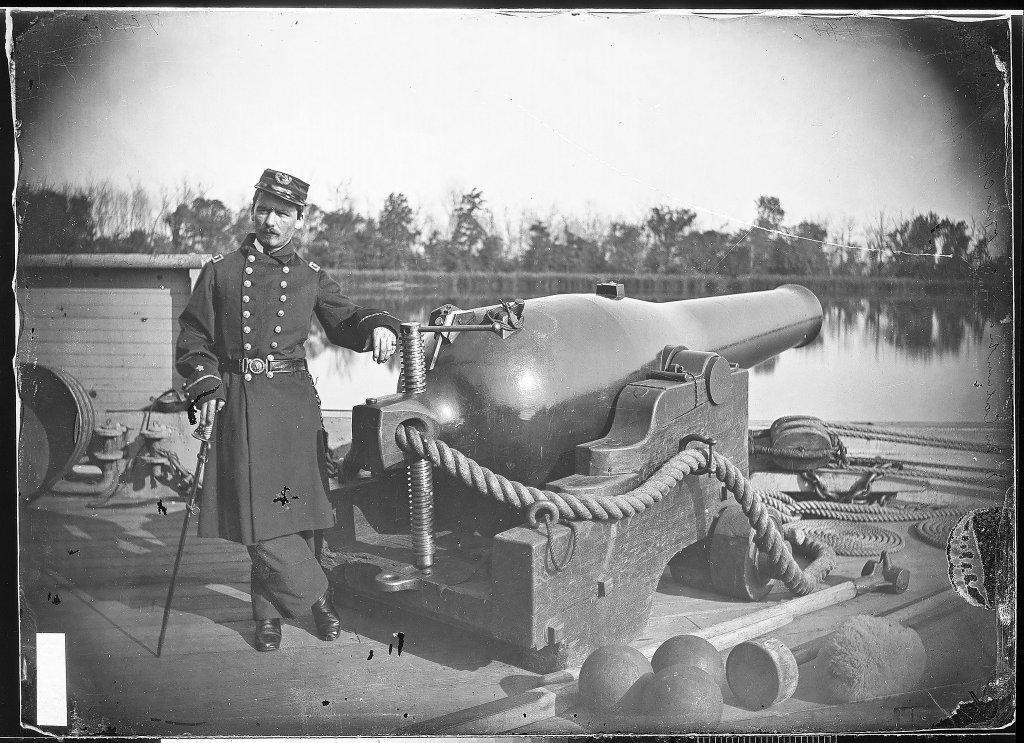
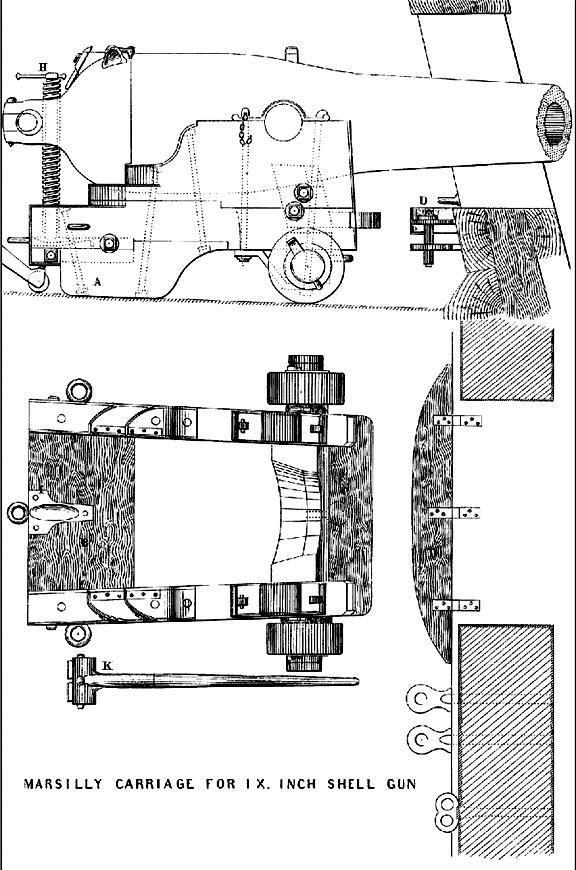
Dahlgren’s design gave more metal at the breech, equalizing strain/pressure from expanding propellant gasses. He would produce guns in various sizes from VIII- to XX-inches. This smooth bore exterior and the curved lines of a Dahlgren prompted some observers to call them “soda bottle guns.” 9 Despite these guns’ ability to fire safely (without bursting), the shot’s velocity was relatively slow.
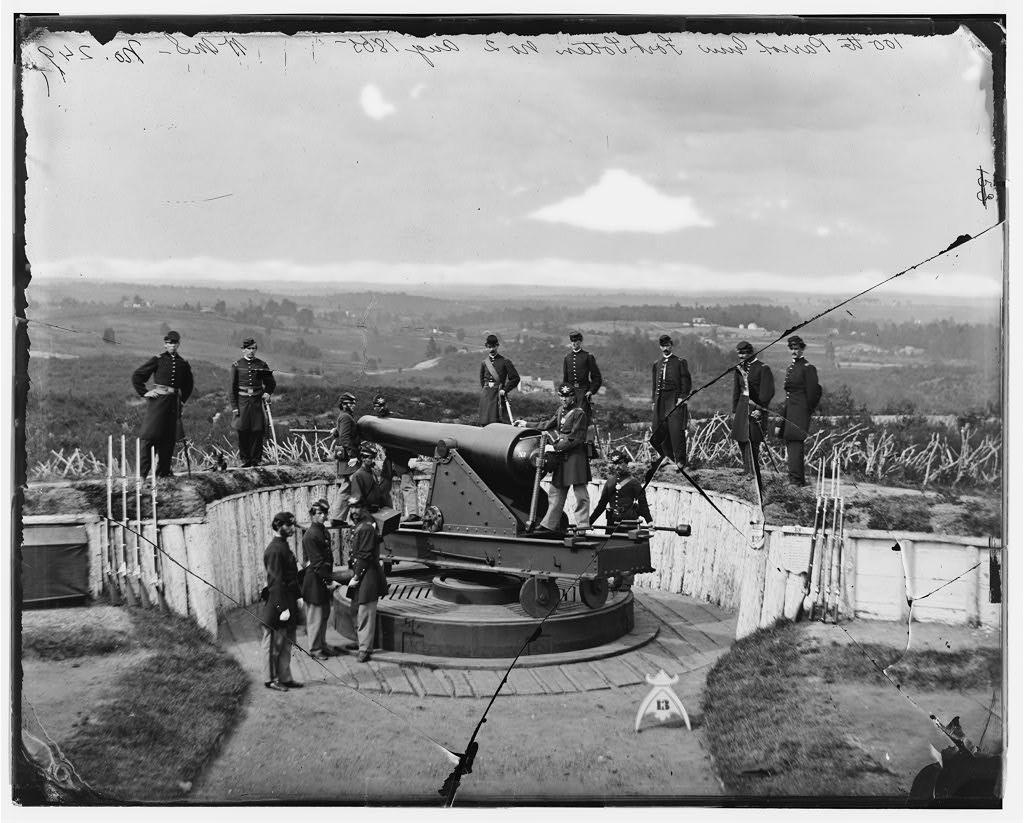
Shell Guns to Rifles
Navies and armies still sought to produce more accurate and reliable weapons. The answer was found, in part, through the development of rifled cannon. Sardinian army officer Major Giovanni Cavalli introduced the first effective rifled gun in 1845. Cavalli’s gun featured a two-grooved, rifled barrel with a ribbed cylindrical shell. An explosive shell could now be hurled at a target with greater velocity, accuracy, and penetrating power than a smooth bore gun. Unfortunately, when tested by the British Army, the Cavalli rifle became unserviceable after only four rounds.10 Soon, other designers, such as Sir William Armstrong, Sir Joseph Whitmore, Robert Parker Parrott, and John Mercer Brooke, created a variety of relatively reliable muzzle-loading rifled guns.11
Parrott, West Point 1820, joined the West Point Foundry Association in 1836. He devised and patented a process to forge weld spiral-coiled wrought-iron cylinders over a cast iron tube. He derived the proportional thickness for the wrought-iron band to surround the seat of the charge in brittle cast iron guns. 12
From Sail to Steam
The Industrial Age introduced new technologies, resulting in naval warfare changes. The shell gun was a death knell for wooden warships. USS Fulton (originally named USS Demologos) was the first functioning steam power warship. Navies immediately recognized the power of steam over sail.13 Accordingly, the transition to steam was rapid and quickened even more for military purposes by the invention of the side propeller. Side-paddle wheels took up the space where mounted guns would otherwise have been. Likewise, the paddles and their engines mounted on deck were vulnerable to artillery fire. The screw propeller enabled engine systems to be installed below the waterline, making screw warships’ motive systems virtually shot proof.14
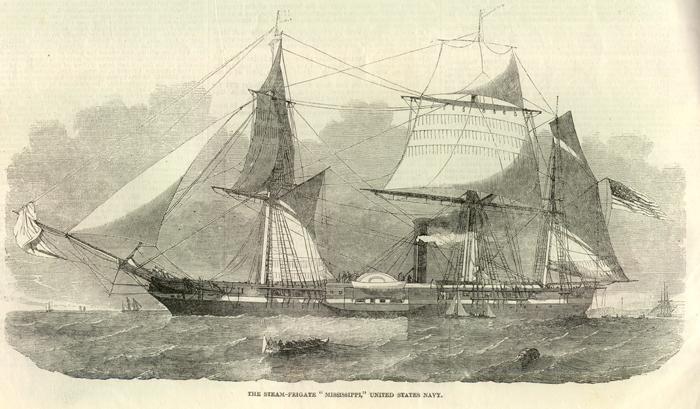
The combination of shell and steam power would be fully introduced to naval warfare during the Crimean and American Civil wars. Although steam power proved itself during the Mexican-American War, the power of explosive shells would prompt significant changes to warship construction during the Crimean War. The stunning Russian naval victory at Sinope on November 30, 1853, proved the superiority of the new shell guns. Admiral Pavel Stepanovich Nakhimov’s squadron destroyed a Turkish fleet. After that, the Allied navies refused to engage the Russian batteries defending Sevastopol, fearing the impact of Russian shells on their ships. The French and, later, the British responded with the construction of floating iron-cased batteries. Three of these – Devastation, Lave, and Etonnante – were towed into the Black Sea and used in an Allied assault at Kinburn on October 17, 1855. The Russian forts were shelled into submission, proving the value of armored vessels against shells and fixed fortifications.15
By 1860, naval warfare had evolved more in the 45 years since the Napoleonic Wars than during any previous era. Technology now ruled the waves. When the American Civil War erupted, North and South alike looked to interpret new machines of war into their war efforts. The South was first to react as the new Confederacy needed the support of France and Great Britain. The cotton for cannons trade was crucial to the Southern states’ independence. The Union immediately instituted a blockade of the 3,500 miles of Southern coastline. Fortunately, the Confederates had captured the largest naval yard in the United States, Gosport Navy Yard in Portsmouth, Virginia. They used the yard’s facilities to transform the scuttled steam screw wooden frigate USS Merrimack into the powerful ironclad ram, CSS Virginia.
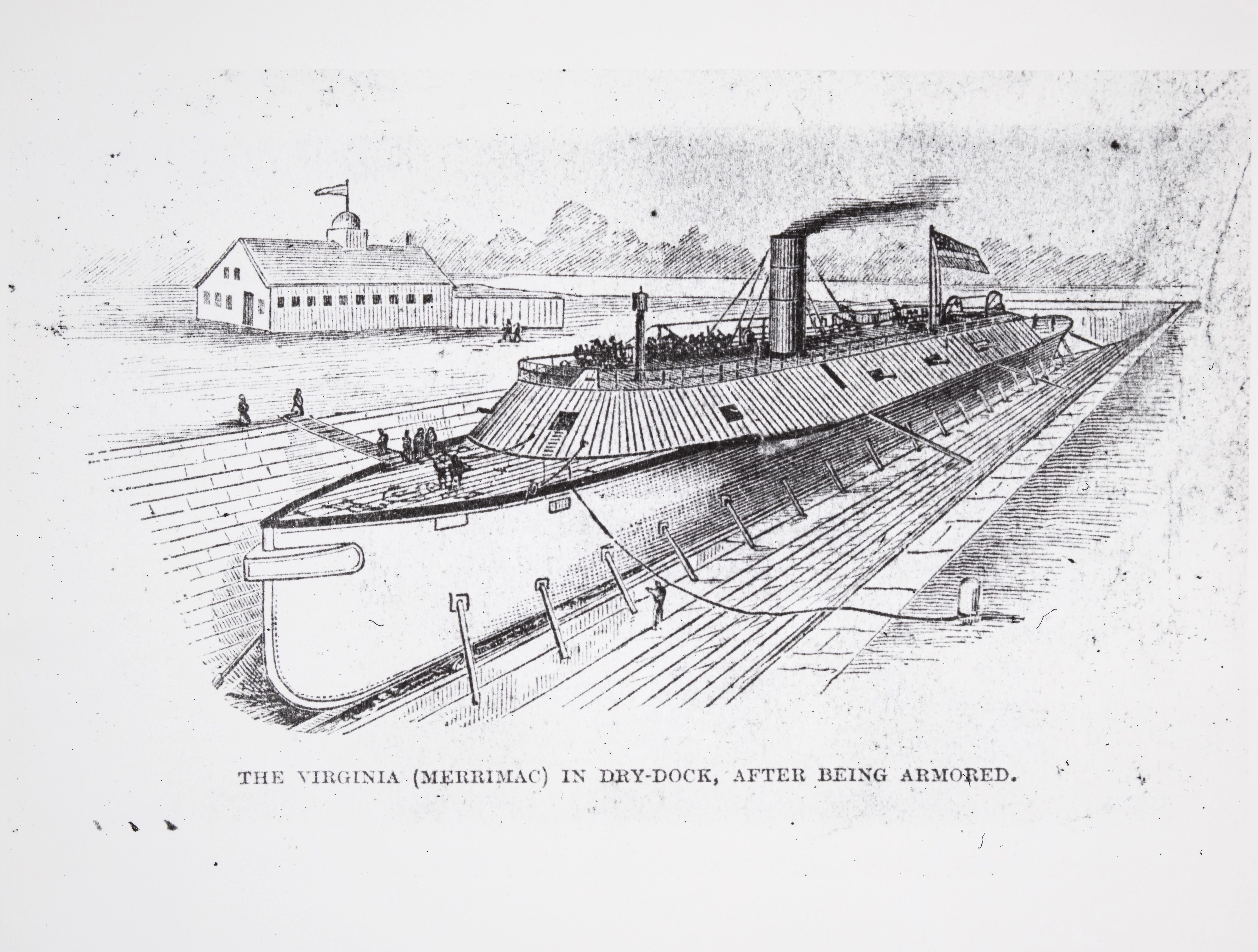
The Power of Iron Over Wood
Technical knowledge gained from the Crimean War was put to good use in Virginia’s construction. The ironclad featured sloped armor to deflect shot, four rifled guns (2 x 7-inch, 2 x 6.4 –inch), six IX-inch Dahlgren shell guns (two fitted to fire hot shot), and a 1,500-pound cast iron ram at its bow. On March 8, 1862, Virginia attacked elements of the Union’s North Atlantic Blockading Squadron in Hampton Roads, Virginia, scoring one of the most dramatic naval victories of the American Civil War. In one afternoon, the Confederate ironclad ram sank two Union capital ships and damaged two others, sank two transports and captured another, and damaged a gunboat. That evening, CSS Virginia appeared to be the most powerful ship in the world; however, USS Monitor arrived that evening. The next day (March 9, 1862), Monitor fought Virginia to a standstill during the first battle between ironclads.16
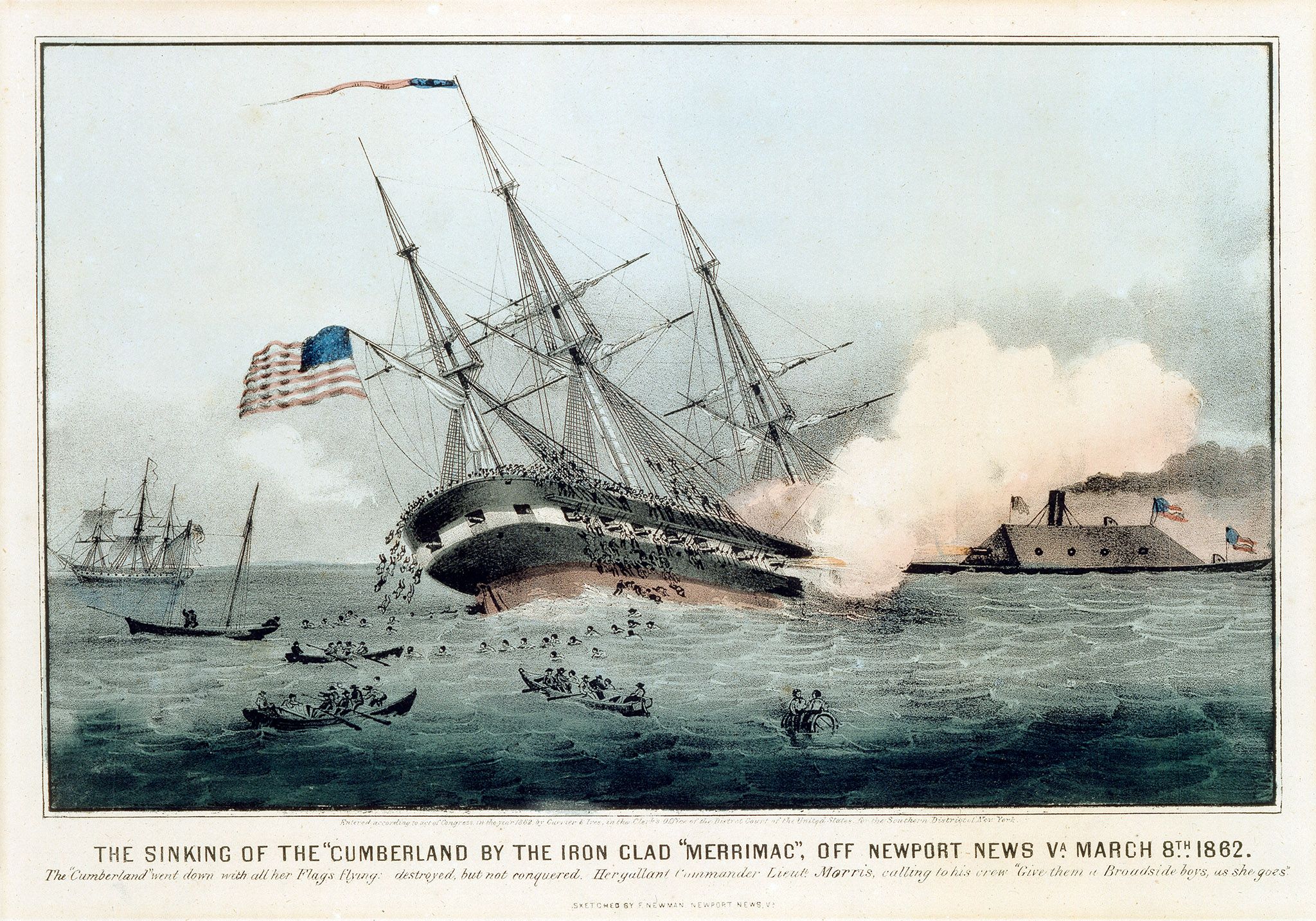
CSS Virginia proved the power of iron over wood with rifles and shell guns, as well as by its dramatic ramming (and sinking) of USS Cumberland. The world immediately recognized that ironclads were the key to naval supremacy. Both navies re-doubled their efforts to produce ironclads: the South would place 23 in the water, and the North 67 (43 were monitors). The question then arose: how to penetrate the armor of an enemy’s armor-clad?
Lieutenant John Mercer Brooke, the inventor of the Brooke gun and the CSS Virginia prototype for subsequent Confederate ironclads, developed the armor-piercing Brooke bolt. These bolts were solid cylindrical projectiles with a blunt or flat nose to reduce the chance of ricochet. This shot had devastating effects on USS Galena at Drewry’s Bluff, outside of Richmond, Virginia, on May 15, 1862, and Rear Admiral S.F. DuPont’s fleet of monitors during the April 7, 1863, attack on Fort Sumter, Charleston Harbor, South Carolina.17
The Big Guns
Nevertheless, the Federals countered with larger Dahlgren smooth bores. During the Battle of Hampton Roads, Assistant Secretary of the Navy Gustavus Vasa Fox observed the engagement and recognized that new monitor classes needed a more powerful gun to smash Confederate ironclad casemates. He witnessed the power of the XV-inch Rodman gun (known as the Lincoln gun) at Fort Monroe, Virginia. So, he challenged Dahlgren to design a similar weapon for use in the new Passaic-class monitors. This larger ordnance posed several problems, especially when casting such a big gun.
Dahlgren, then chief of the Naval Bureau of Ordnance, decided to use the Rodman casting method, a patented ‘core-barrel’ process developed by West Point graduate Thomas Jackson Rodman. The gun would be cast hollow and cooled inside by air or water. “The concept was to freeze molten metal from its bore outward, pushing impurities to the exterior.” He envisioned “‘the casting’ as an outward succession of concentric rings, that in turn, while cooling, would solidify and then shrink. Their shrinkage would compress those already cooler within, producing compression stresses to oppose firing pressures.” 18 The XV-inch solid shot severely impacted CSS Atlanta and CSS Tennessee during combat. These Confederate ironclads had their casemates blown apart by close-ranged XV-inch solid shots.19
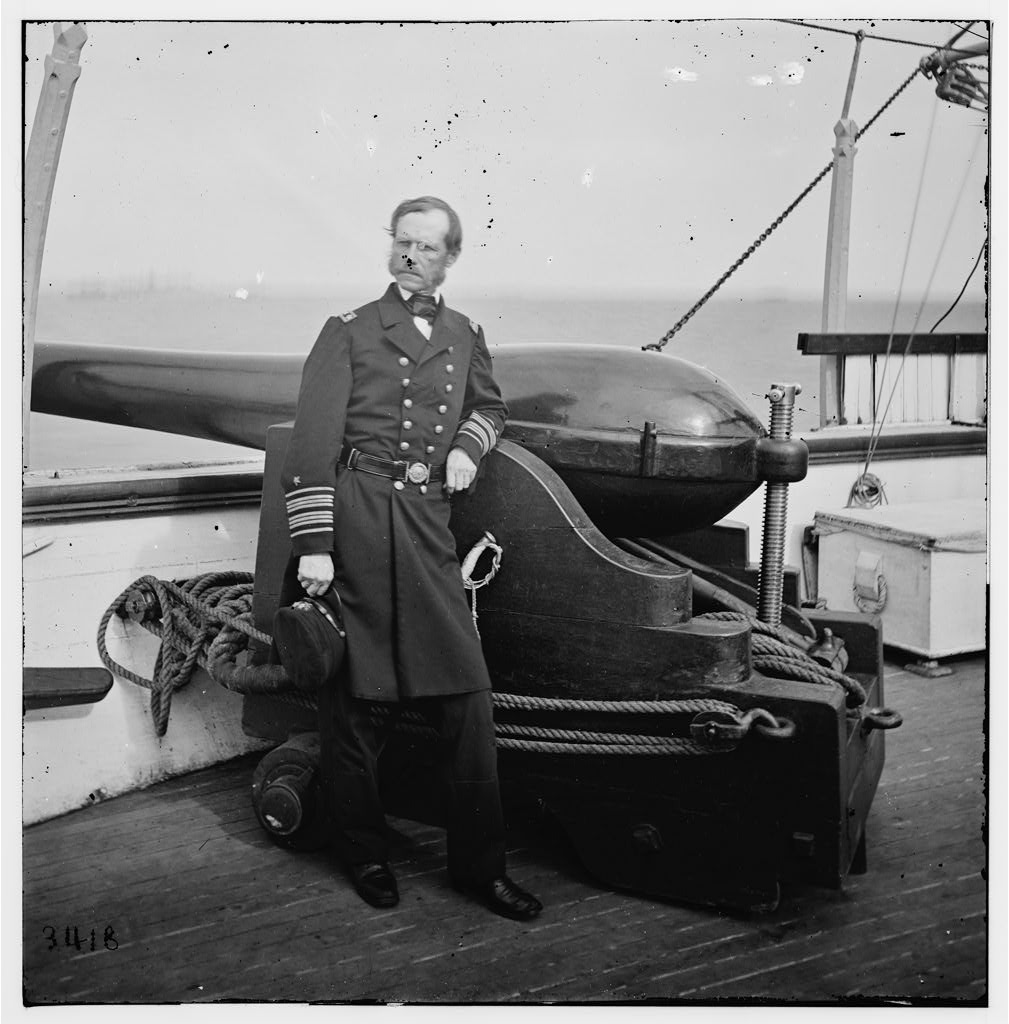
Damn the Torpedoes
Besides new projectiles, both navies had to introduce other ordnance designs to achieve victory. The torpedo was introduced, which witnessed the development of various delivery systems. Matthew Fontaine Maury, ‘the Pathfinder of the Seas,’ experimented with contact and hydrostatic torpedoes (mines). Minefields were placed at the entrance to most Confederate ports, and these explosive devices sank several Union warships, including the shocking destruction of the monitor USS Tecumseh at the entrance to Mobile Bay, Alabama. Torpedo boats and submarines were designed to place spar torpedoes underneath an enemy vessel, equally dangerous and destructive to the hunter and the prey. Such was the case of CSS Hunley and USS Housatonic.20
Few facets of the American Civil War more closely support the theme of technology and attrition than the war on the water. The war witnessed an overnight change in naval tactics. “Fighting instructions” became archaic and forgotten due to steam power, shell guns, ironclads, rams, revolving turrets, torpedoes, and rifled cannons. These tools left an indelible mark on future ordnance and ship design. The ordinance of 1862 dictated how new warships were built. The shot and shell hurled by mammoth shell guns and powerful rifles could destroy or debilitate a pre-war wooden vessel with a single hit.
Lessons Learned
Whereas the postwar American naval establishment seemed content, European navies were driven to construct improved ocean-going ironclads to ensure their control of ocean routes to overseas resources. The Europeans immediately employed the lessons learned during the American conflict. “Like a bayonet charge of infantry,” Confederate Secretary of the Navy Stephen Russell Mallory called the impact of ramming during a naval battle.
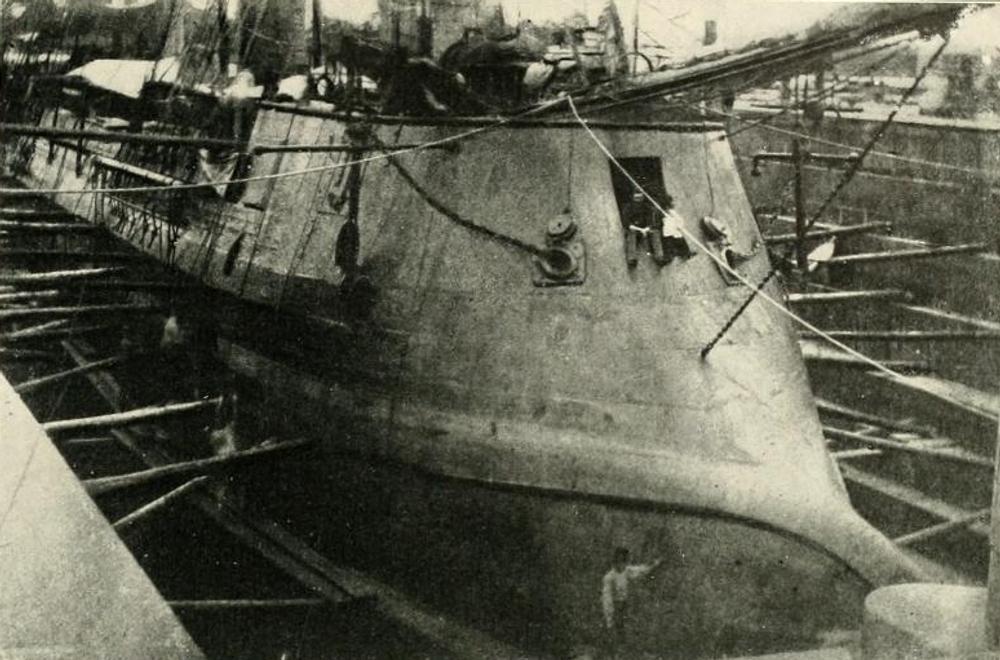
The Battle of Lissa on July 20, 1866, was the most decisive naval engagement of the Seven Weeks’ War between the Austrian and Italian fleets vying for control of the Adriatic Sea. The Italian fleet, commanded by Admiral Count Carlo Pellion di Persano, consisted of 11 armored ships that steamed against the Austrian-controlled island of Lissa. The Austrian fleet, commanded by the dynamic Rear Admiral Wilhelm von Tegetthoff, moved to stop the Italian strike force. Tegetthoff’s command contained only seven armored ships, and as his vessels did not possess heavy modern shell guns, he believed in the power of the ram. The Austrians, in three divisions, formed within three arrowhead lines. Tegetthoff’s flagship, Erghergog Ferdinand Max, rammed and sank Re d’Italia. Two other Italian ironclads would also sink that day. Lissa was the first sea battle between ironclad warships.21
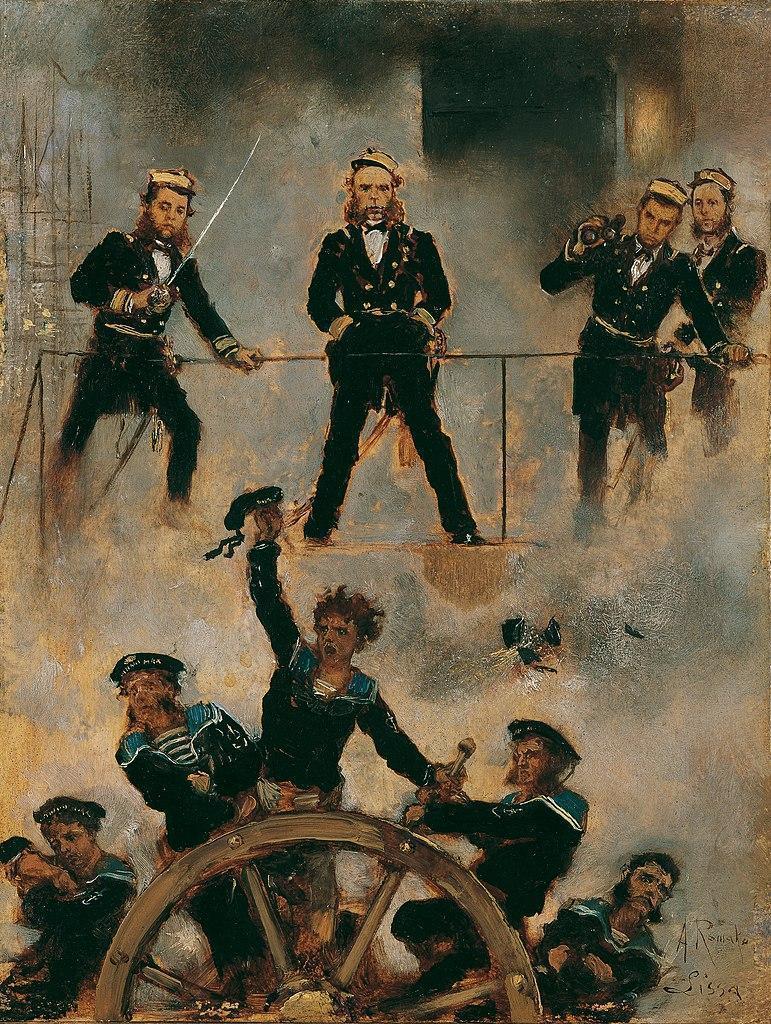
Since naval artillery did not seem as effective against ironclads as the ram, this combat tactic would influence ship design over the next three decades. Ship designers recognized that improved ordnance – bigger guns with more powerful projectiles – was required. The ordnance developed after 1870 would heavily impact ship design, protection, and propulsion, and in 40 years, the world would witness the height of battleship design, HMS Dreadnought. This evolution began in 1822 with the publishing of Henri Paixhans’ far-reaching books and the subsequent development of ordnance that dictated ship design for the next 80 years.
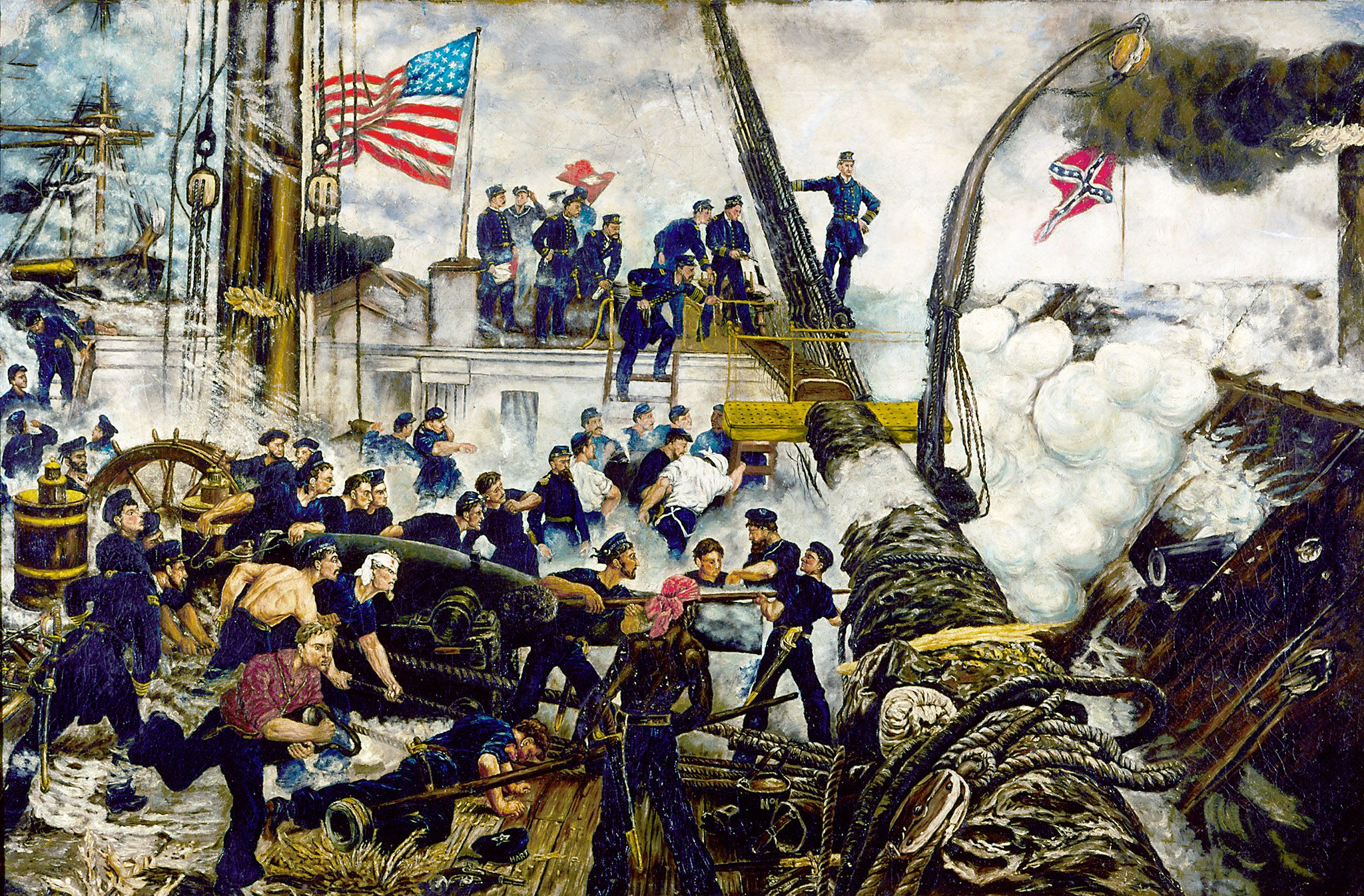
Endnotes
1. Parties Du Service De L’armée De Terre. Bachelier, Libraire, Quai Des Augustins, Paris, 1822.
2. Henri-Joseph Paixhans, Expériences Faites par la Marine Française, sur une Arme Nouvelle, Bachelier, Libraire, Quai Des Augustins, Paris, 1825.
3. Ian V. Hogg, A History of Artillery, London: Hamlyn Publishing Group, 974, p. 72-73. and Spencer Tucker, Handbook of 19th-century Naval Warfare, Annapolis, MD: Naval Institute Press, 2000, pp. 78-79.
4. Elmer Olmstead, Wayne E. Stark, and Spencer C. Tucker, The Big Guns: Civil War Siege, Seacoast and Naval Cannon, Alexandria Bay, New York: Museum Restoration Service, 1997, p. 111.
5. John V. Quarstein, The Monitor Boys: The Crew of the Union’s First Ironclad, Charleston, SC: The History Press, 2001, pp. 18-23.
6. Madeleine Vinton Dahlgren, Memoir of John A. Dahlgren, Rear Admiral United States Navy, New York: J.R. Osgood and Co., 1882, p. 226.
7. Robert Scheller Jr., Quest for Glory: A Biography of Rear Admiral John A. Dahlgren, Annapolis, MD: Naval Institute Press, 1995, 273.
8. Spencer C. Tucker, Handbook of the 19th-century Naval Warfare. Annapolis, MD: Naval Institute Press, 2000,
9. Warren Ripley, Artillery and Ammunition of the Civil War, New York: Promontory Press, 1970, p. 91.
10. Tucker, Handbook of 19th-century Naval Warfare, p. 87.
11. Ibid, pp. 86-93.
12. Olmstead, Stark, and Tucker, The Big Guns, pp. 111-113.
13. Donald Cannery, The Old Steam Navy: Frigates, Sloops and Gunboats, 1815-1885, Annapolis, MD: Naval Institute Press, 1990, p.3.
14. Quarstein, The Monitor Boys, p. 16.
15. John V. Quarstein, CSS Virginia: Sink Before Surrender, Charleston, SC: History Press, 2012, pp. 54-56.
16. Ibid, pp. 57-58, 117-135, 167-169.
17. John V. Quarstein, A History Of Ironclads: The Power of Iron Over Wood, Charleston, SC: The History Press, 2006, pp. 134, 165-167.
18. Olmstead, Stark, and Tucker, The Big Guns, p. 75.
19. John V. Quarstein, A History of Ironclads, pp. 134, 165-167.
20. Ibid, pp. 182, 200.
21. Tucker, pp. 131-133.
